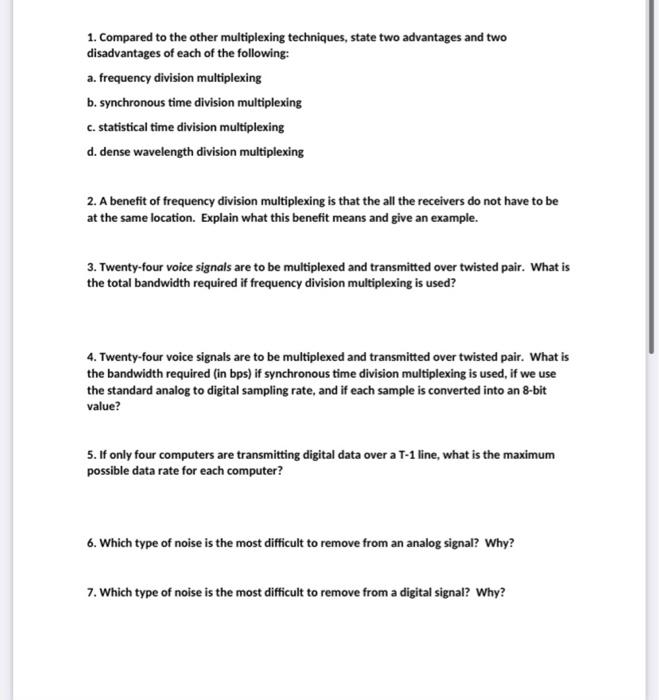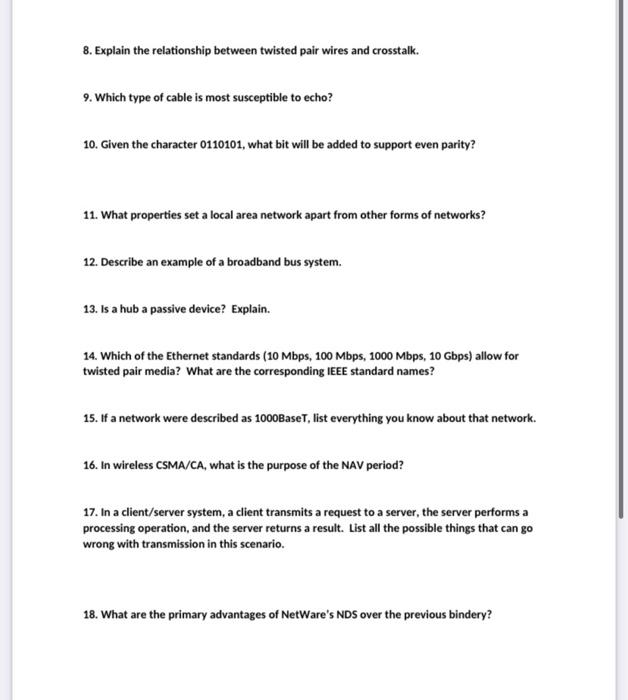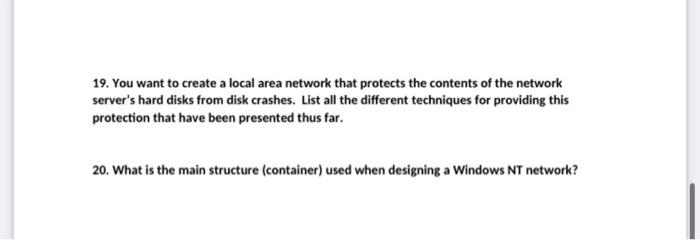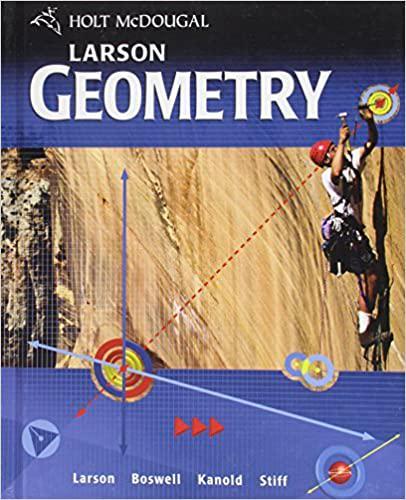Answered step by step
Verified Expert Solution
Question
1 Approved Answer
1. Compared to the other multiplexing techniques, state two advantages and two disadvantages of each of the following: a. frequency division multiplexing b. synchronous



1. Compared to the other multiplexing techniques, state two advantages and two disadvantages of each of the following: a. frequency division multiplexing b. synchronous time division multiplexing c. statistical time division multiplexing d. dense wavelength division multiplexing 2. A benefit of frequency division multiplexing is that the all the receivers do not have to be at the same location. Explain what this benefit means and give an example. 3. Twenty-four voice signals are to be multiplexed and transmitted over twisted pair. What is the total bandwidth required if frequency division multiplexing is used? 4. Twenty-four voice signals are to be multiplexed and transmitted over twisted pair. What is the bandwidth required (in bps) if synchronous time division multiplexing is used, if we use the standard analog to digital sampling rate, and if each sample is converted into an 8-bit value? 5. If only four computers are transmitting digital data over a T-1 line, what is the maximum possible data rate for each computer? 6. Which type of noise is the most difficult to remove from an analog signal? Why? 7. Which type of noise is the most difficult to remove from a digital signal? Why? 8. Explain the relationship between twisted pair wires and crosstalk. 9. Which type of cable is most susceptible to echo? 10. Given the character 0110101, what bit will be added to support even parity? 11. What properties set a local area network apart from other forms of networks? 12. Describe an example of a broadband bus system. 13. Is a hub a passive device? Explain. 14. Which of the Ethernet standards (10 Mbps, 100 Mbps, 1000 Mbps, 10 Gbps) allow for twisted pair media? What are the corresponding IEEE standard names? 15. If a network were described as 1000BaseT, list everything you know about that network. 16. In wireless CSMA/CA, what is the purpose of the NAV period? 17. In a client/server system, a client transmits a request to a server, the server performs a processing operation, and the server returns a result. List all the possible things that can go wrong with transmission in this scenario. 18. What are the primary advantages of NetWare's NDS over the previous bindery? 19. You want to create a local area network that protects the contents of the network server's hard disks from disk crashes. List all the different techniques for providing this protection that have been presented thus far. 20. What is the main structure (container) used when designing a Windows NT network?
Step by Step Solution
★★★★★
3.47 Rating (150 Votes )
There are 3 Steps involved in it
Step: 1
1 Advantages and disadvantages of multiplexing techniques a Frequency Division Multiplexing FDM Advantages 1 Allows for simultaneous transmission of multiple signals over a shared medium 2 Each signal ...
Get Instant Access to Expert-Tailored Solutions
See step-by-step solutions with expert insights and AI powered tools for academic success
Step: 2

Step: 3

Ace Your Homework with AI
Get the answers you need in no time with our AI-driven, step-by-step assistance
Get Started


